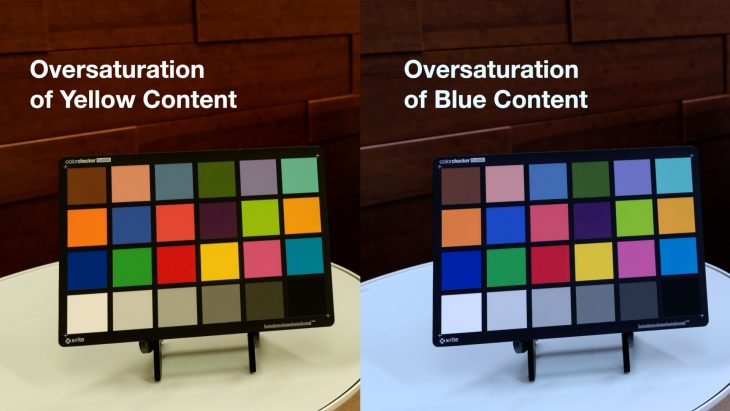As more modern lighting upgrades in commercial buildings are focused on reducing energy usage, we must also remember that lighting quality is equally important.

Lighting plays an important functional and aesthetic role in architecture, contributing to user safety and enhancing the built environment. Today, lighting upgrades in commercial buildings continue to focus on reducing energy usage, with a lesser emphasis on light quality.
The proliferation of energy efficient commercial building products has allowed the sector to improve its energy efficiency. According to the US Energy Information Administration (EIA), in 2011 lighting was responsible for 38 percent of all electricity consumed in the commercial sector, by 2017 that number had been reduced to 11 percent. Considering the long lifetimes of LEDs, the environmental impact of lighting as it pertains to maintenance and replacement has been significantly reduced. As the efficacy of LED light sources is reaching a plateau, an argument can be made to re-focus the discourse on lighting quality and how it can improve the experience of those who inhabit the spaces.
Recent research outlines the parameters of a light quality that humans prefer, one that supports the creation of more human-centric environments. The Illuminating Engineering Society (IES) TM-30-18 technical memorandum provides a method for measuring the color rendition of a light source and its parameters are used by the WELL Building Standard™ (WELL) under Feature L07 – Electric Light Quality of WELL v2 pilot.

Tools used to assess light quality
Used since the 1960s, CRI, an abbreviation for Color Rendering Index, is an average color rendering score used to measure light quality. Generally, a score above 80 is desired and most LED light sources installed in commercial buildings have a CRI of 80 or above. Higher quality light sources with a CRI of 90, which theoretically translates into more naturally rendered colors, is also commonly available from luminaire manufacturers but specified less often. 90 CRI is typically found in healthcare or other environments where accurate color perception is paramount, such as when evaluating the condition of a patient.
While CRI is an easy-to-understand rule of thumb, it also has limitations. It is a measure of fidelity only: it describes how a light source differs from a reference illuminant, a blackbody radiator, without describing the direction of the change in either chroma or hue. For example, consider a light source with a 20 percent over-saturation of yellow content and another with a 20 percent over-saturation of blue content. These two light sources with very different color saturations, assuming the other colors are the same, would both have a similar Color Rendering Index value. To compensate for this, a red metric called R9, which specifically measures red fidelity, is often used along with CRI.
TM-30-18, a technical memorandum from the Illuminating Engineering Society (IES), addresses the evaluation of a light source’s color rendition. TM-30 measures not only the color fidelity of a light source to a blackbody radiator with the Fidelity Index (Rf), but also measures saturation with the Gamut Index (Rg). Additionally, TM-30 divides the color spectrum into 16 hue bins and provides measures of fidelity, hue, and chroma shift for each hue bin. As a result, it spells out not only if a light source is oversaturated, but also in what color spectrum the over-saturation occurs. Going back to the above example, we would see the over-saturation in yellow or blue, or any of the 16 hue bin colors.
Though quality of light is far from being a new topic for the lighting design industry, new initiatives have recently emerged surrounding lighting for human preference. These initiatives include white tuning, circadian lighting, warm dimming, and human preference lighting. In addition, new building standards have also emerged, such as the WELL Building Standard (WELL), contributing to an increased awareness of the importance of balancing human health and well-being with efficiency and sustainability.

Scientific research in color preference
Several recent research studies, conducted by Pacific Northwest National Laboratory (PNNL) and Penn State University (PSU) in the United States, as well as Zhejiang University in China come to similar conclusions when attempting to define a light quality that is preferred by humans.
The first study, published in 2016 by PNNL, was centered on discovering a general preference. Participants were shown various light scenes, all at 3500K in a room filled with common items such as fruits, clothing, and consumables and outfitted with a mirror so that changes in skin tones could be observed. The participants were exposed to various light sources and asked to rate each scene, in which the color of the light varied from low to high fidelity and from undersaturated to oversaturated.
When the research team ran the results against statistical models, a very interesting trend emerged. Rather than fidelity being linked to preference, they found a strong correlation between saturation and preference. They further identified that saturation in red was key.
PSU also performed a study at 3500K using a different methodology. The PSU study converged with the PNNL report for preference, finding that the most preferred light sources over-saturated the red content. The results were further corroborated by two additional PNNL studies confirming that the idea of increasing red saturation is applicable not only at 3500K but also at a chromaticity range of 2700K to 4300K.
Similar preference models were also observed in another study outside of the United States, at Zhejiang University in China, suggesting that the over-saturation of red content leading to a more preferred light source is not necessarily associated with a specific cultural background. Overall, humans prefer a light that is slightly oversaturated in red content, for reasons deeply rooted in psychology and anthropology.
Each study’s conclusion supports the idea that the type of light people prefer closely resembles that emitted by a blackbody radiator such as the sun or an incandescent light, with a greater saturation in red color. This indicates that the currently widely used 80 CRI LEDs are not optimal in terms of providing a light source that is preferred by humans.

Meeting standards with a human-centric approach
The WELL Building Standard™ (WELL) is the premier standard for buildings and focuses on the ways that buildings and interiors can improve human comfort and enhance human health and wellness. WELL was formed based on scientific and medical research, along with articles on behavioral and health factors that conclude to a correlation between productivity and health benefits as they relate to building design, construction, and the management of interiors and systems such as ventilation, lighting, and acoustics.
There are currently two WELL standards available for projects seeking registration: WELL v1 and WELL v2, which is in pilot phase. WELL v1 is comprised of seven Concepts: air, water, nourishment, light, fitness, comfort, and mind. WELL v2 has expanded to include ten Concepts: air, water, nourishment, light, movement, thermal comfort, sound, materials, mind, and community. Feature L07 of WELL v2 explicitly addresses electric light quality. The feature contains two parts: Part 1 ensures color rendering quality and Part 2 focuses on managing flicker.
The metrics specified as minimum requirements under Part 1 are either a CRI greater than 90 or a CRI greater than 80 with R9 greater than 50, both translating into an emphasis on the red spectrum. The third metric is new to WELL v2 and is grounded in the recent research studies reference earlier. It uses the parameters of the IES TM-30-18 to specify a light source with a minimum fidelity of 78 (Rf ≥ 78), an overall over-saturation (Rg ≥ 100) and an over-saturation in the red spectrum (-1 percent ≤ IES Rcs,h1 ≤ 15 percent).
Designers have always focused on improving the overall quality of light in architectural spaces. Advances in LED technology, along with new evaluation tools and emerging research in human preference lighting have enabled a path to specify a color spectrum that humans generally prefer. This spectrum can help designers achieve better coloration of skin tones, warmer wood tones, increased vibrancy of objects and a more pleasant environment for building occupants. Most importantly, it creates a sense of comfort for humans. Additional studies have shown that when humans are more comfortable in an environment, they tend to be more productive, further supporting the idea that the buildings should have a greater focus on light quality. It is time to look beyond a functional approach in commercial building designs and deliver more human-centric spaces.



I can see how the quality of light in a space can have an effect on the comfort of people in that space. It is interesting to know that, in general, people preferred light with a red saturation. After hearing the reasoning, though, it is not hard to understand why that is the case. It seems to be the most comparable to natural light, which is naturally very desirable. All in all, this was a very interesting read.